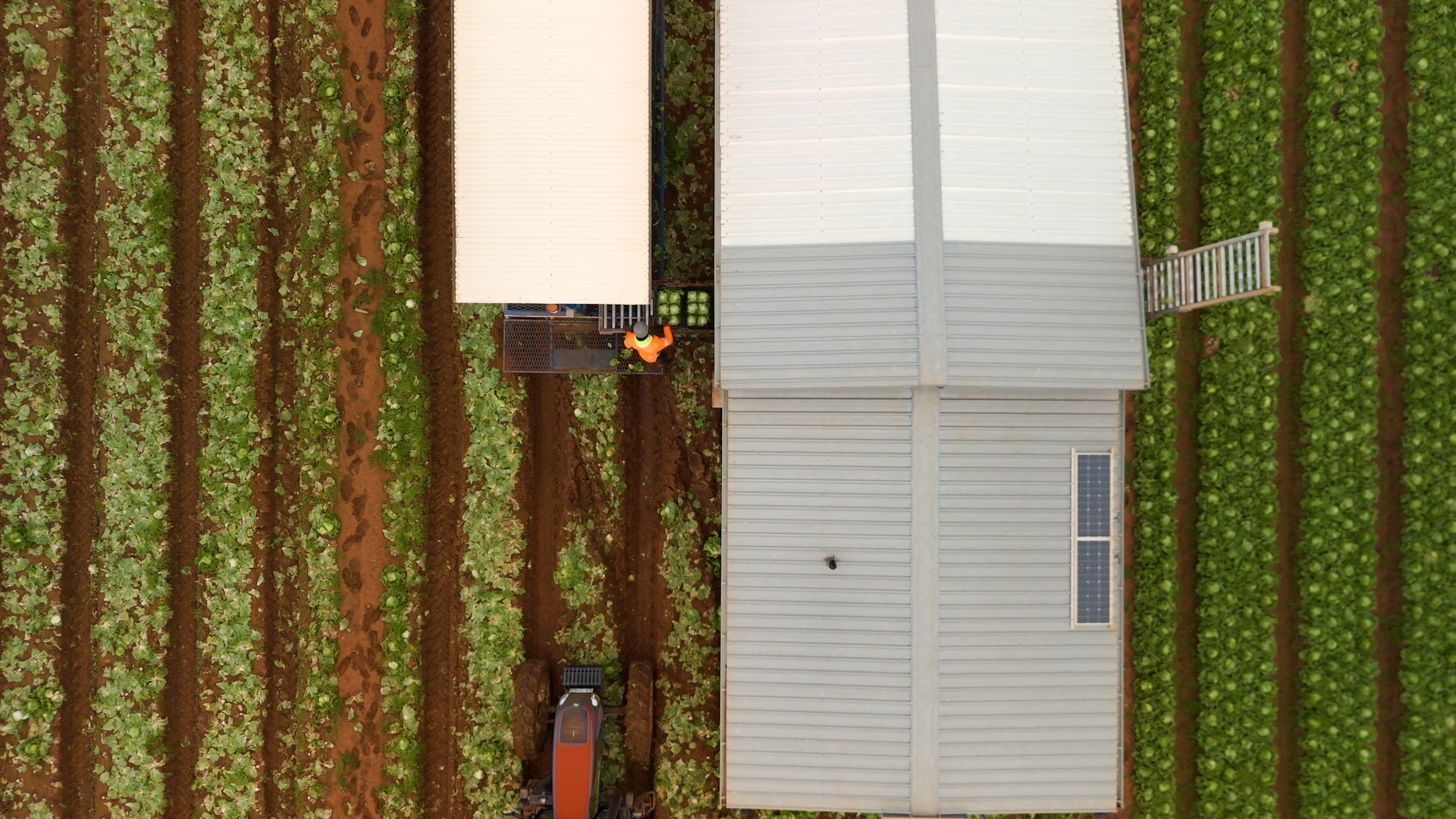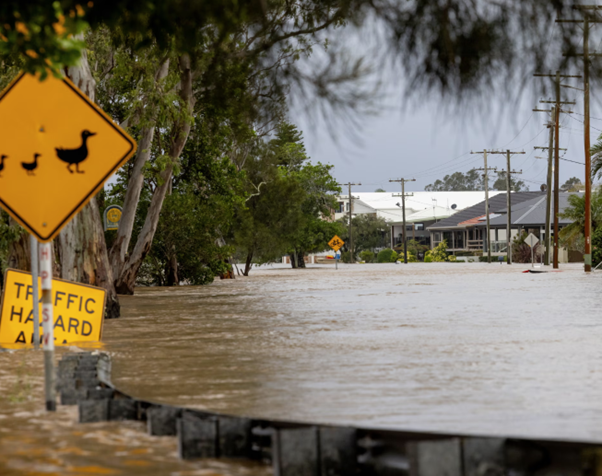** Check against delivery **
Thank you for the introduction, Paul, and for inviting me to discuss the 2017 political and economic outlook.
I hope you will excuse me for looking beyond the year ahead. My purpose is to emphasise an urgent need for action today, to build a stronger and better Australia for tomorrow.
Acceptance of the urgency of action is long overdue. For some time now, sluggish complacency has been undermining the quality of life available to ourselves, our children, and our grandchildren.
BUILDING A COLLECTIVE VISION
Australia is a great place to live. It is a great place to run a business. And our economy has proven itself resilient.
Over the past 25 years we have avoided a technical recession despite the Asian financial crisis of 1997-98; the turn-of-the-century ‘tech wreck’ in the United States; and the global financial crisis of 2008-09.
There is much to be celebrated.
But it does not give Australians confidence in the future.
In recent months, the National Australia Bank has surveyed our business customers and the broader community about their attitudes to Australia, including their vision for the nation’s future, sources of opportunity and the obstacles that they consider need to be overcome.
While 90 per cent of the Australians we surveyed consider Australia to be a great place to live today, only half think it will still be a great place a decade from now. And while 82 per cent of businesses think Australia is a great place to run a business now, only 60 per cent believe it will remain so in ten years’ time.
Remarkably, only 1 in 5 Australians believe that we as a country have a clear, shared vision for our future.
These findings are compatible with the writings of respectable commentators whom, for some years now, have been drawing attention to deep community disaffection – with business, with politics and with media – both here and around the world.
And yet, when we asked people what a future Australia should look like, responses were compelling.
Moreover – and this is the most important conclusion to be drawn from our surveys – the visions described by our business leaders and those in the broader community were in substantial harmony.
Most Australians want to live in a future Australia that is: safe and secure, fair, inclusive, tolerant and free. They want lives that are: healthy and affordable – and where they can continue to enjoy our open spaces and natural environment.
Most businesses want to operate in a future Australia that: has thriving regions and affordable housing options to support a growing population; in a society that is even more open and inclusive; with a stronger commitment to paying down debt.
This is no fantasy. It is a vision well within our reach. Yet, Australia’s leaders are not even looking.
The leadership task is urgent. And it is achievable.
We must start with a realistic assessment of where we are – setting out the challenges and opportunities before us – and then develop a clear roadmap to the future being described by our citizens.
THE ROLE OF BUSINESS
I am here today as Chairman of the National Australia Bank – one of Australia’s largest companies and also Australia’s biggest business bank. So I will start with the role of business leaders.
Business shapes the economy.
The commercial decisions of our businesses determine what is produced, for whom and at what price. Our decisions determine who gets a job, how much they are paid, and where they get to live and work.
And right now, business investment is soft.
Since 2013, mining investment has declined sharply; and non-mining investment has been flat, in nominal dollar terms, for several years now. Why?
Of the businesses we surveyed, 85 per cent want to invest more in their businesses and grow. But half of them identified a lack of a clear plan for the future as a significant factor that is holding them back from making investment decisions.
Australian businesses will not invest, they will not create jobs, unless they have confidence in Australia’s economic future, and in Australia’s place in the world.
According to our research, Australian businesses see our strong rate of population growth as a positive. That is not surprising. And they identify the following as important additional factors in supporting business growth:
- Greater certainty in the domestic economy.
- Less red tape, less regulation and a simpler taxation system.
- Modern and efficient infrastructure.
- Better access to skilled domestic workers.
It’s up to business to make the case for change, and to lead.
In the broader community, there is considerably less support for a larger population. People are concerned about the impact of a growing population on traffic congestion, urban amenity, environmental sustainability and housing affordability. And they worry about our ability to sustain Australian norms of social and economic inclusion. These concerns are understandable.
Australia’s business leaders have to accept responsibility for ensuring that strong population growth, and the investment opportunities that go with it, lift economic and social opportunity for all, without damaging the quality of the environment we pass to future generations. That means that we have to take an interest in traffic congestion, housing affordability, urban amenity and environmental amenity, including climate change mitigation and adaptation.
If we want better access to skilled domestic workers, then we are going to have to offer those workers the prospect of better lives. If we want modern and efficient infrastructure, then we are going to have to take an interest in the design of our cities; we are going to have to take an interest in regional development; and we are going to have to take an interest in the planning of new urban centres.
If we want less red tape and less regulation, then we are going to have to demonstrate that regulation is not necessary.
And if we want greater certainty in the domestic economy, then we are going to have to start delivering it ourselves.
Topics that we have traditionally assumed to be in the domain of public policy, and not the stuff of business, are going to have to become our constant preoccupation.
We do nobody any favours – least of all our shareholders – when we boast proudly, on the one hand, that we are the source of jobs and incomes but, on the other, insist that we need accept no responsibility for the impact of our business decisions on communities and the environment.
Future success will be built on a foundation of trust.
This statement is true of every business – but particularly of banking, an industry reliant entirely on the quality of customer relationships, on earning confidence and respect.
NAB’s leaders understand our accountabilities to our customers, our shareholders and the communities in which we operate. Every day, we seek to serve our customers better. Our goal is to ensure that the community has greater confidence in our products, our services and our people.
We take pride in the important role that we play in building a stronger Australia. That we lend more to small business in Australia than any other bank. That we are the leading arranger of finance for Australia’s major infrastructure projects. That we have the market leading position in the financing of renewable energy. That we contribute to building a more inclusive community by enhancing opportunities available to Indigenous Australians and supporting those affected by domestic violence. That we generate income for millions of shareholders and close to 35,000 employees.
All of Australia’s business leaders, including in NAB, could talk more openly, with greater conviction, and more inclusively, about the role we see our businesses playing in building a better future for all Australians.
THE STATE OF POLITICS
Meanwhile, our politicians have dug themselves into deep trenches from which they fire insults designed merely to cause political embarrassment. Populism supplies the munitions. And the whole spectacle is broadcast live via multimedia, 24/7. The country that Australians want cannot even be imagined from these trenches.
Today’s dysfunction stands in marked contrast to earlier periods of policy success – where politics was adversarial, every bit as partisan – but when the tribal tensions within parties were generally well managed and the political contest appeared to energise policy, not kill it.
Almost every major infrastructure project announced in every Australian jurisdiction in the past 10 years has been the subject of political wrangling. In the most recent federal election campaign, no project anywhere in the nation – not one – had the shared support of the Coalition, Labor and the Greens.
Every government proposal of the last 10 years to reform the tax system has failed.
And the long term fiscal, economic growth and environmental challenges identified in four intergenerational reports over the past 15 years? The opportunities identified in the White Paper on Australia in the Asian Century? Simply ignored.
The reform narrative of an earlier period has been buried by the language of fear and anger. It doesn’t seek to explain; rather, it seeks to confuse and frighten.
Meanwhile, the platform burns.
REFORM IMPERATIVES
Four interrelated policy challenges demand immediate attention, critical to building the Australia that Australians want.
All four predate our present Federal Parliament.
- First is the need to repair the budget.
- Second is the need to plan for a strongly growing, but ageing, population.
- Third is the need to settle the policy framework for climate change mitigation and energy security.
- And fourth is the need to ensure that we are set to make the most of the Asian century.
I don’t have time today to do justice to these topics. I will make just a few remarks – starting with the Federal Budget.
Australia’s current tax system was designed to achieve a reduction in the size of government over time, forcing spending below the average 24.1 per cent of GDP recorded by the Howard Government.
But that hasn’t happened.
While payments were at 24.1 per cent of GDP in 2012-13, the most recent MYEFO reveals that they had risen to 25.6 per cent of GDP by 2015-16, and are projected to be 25.2 per cent of GDP from 2016-17 out to 2019-20. According to the most recent Budget, payments will then rise further, partly as a consequence of population ageing.
This is bigger government, not smaller government. And bigger government must be paid for.
But how?
It is easy to accept that the Budget has an expenditure problem; it surely does. But this Budget is also relying heavily on fiscal drag to lift revenue by about 3 ½ percentage points of GDP – more than $60 billion a year in today’s money – over the decade to 2019-20. A fiscal strategy with that dependance on fiscal drag also has a revenue problem.
And the budget confronts other challenges for which it is ill-equipped.
Even with strong growth in the size of government and public debt, we do not have the infrastructure capacity to support today’s population, far less the population of the future.
How will we fund the biggest infrastructure build in our history? And what about infrastructure planning?
A few years ago, I spent some time in Beijing. One of the meetings I had was with an Australian architect. When I asked him what attracted him to working in China, he related an anecdote: The Chinese Government had issued a request for tender to design, from bare earth, a brand new city for two million people. His firm had been successful. ‘Now, where else in the world could you have the opportunity for that sort of work?’ he asked.
Where indeed?
On the basis of official projections of Australia’s population growth, our governments could be calling tenders for the design of a brand new city for two million people every five years; or a brand new city the size of Sydney or Melbourne every decade; or a brand new city the size of Newcastle or Canberra every year. Every year.
But that’s not what they are doing. Instead, they have decided that another 3 million people will be tacked onto Sydney and another 4 million onto Melbourne over the next 40 years.
Already, both cities stand out in global assessments of housing affordability and traffic congestion.
And even if we do manage to stuff an additional 7 million people into those cities what are we going to do with the other 9 million who will be added to the Australian population in that same period of time? Have you ever heard a poltical leader addressing that question? Do you think anybody has a clue?
At the very least, we are going to have to find radical new approaches for infrastructure planning, funding and construction. And that includes energy infrastructure, critical to our economic performance and our quality of life.
The biggest challenge confronting the energy sector is that climate change policy in Australia is a shambles.
At least 14 years ago, our political leaders were told that there was an urgent need to address the crisis in business confidence, in the energy and energy-intensive manufacturing sectors, due to the absence of credible long-term policies to address carbon abatement. It is quite extraordinary, but nevertheless true, that things are very much worse today.
And what about making the most of the opportunities of the Asian century? You never hear our political leaders even talking about this topic today.
Addressing these four challenges will require, at the very least, all of the following:
First, apolitical infrastructure planning and pricing, including the widespread use of road user charging.
Second, a much lower company tax rate, or some other mechanism that reduces substantially the cost to Australian businesses of equity capital sourced from abroad, achieved much more quickly than is presently under consideration by our Parliament.
Third, the removal of stamp duties on residential property.
Fourth, symmetrical tax treatment of interest and capital gains.
Fifth, an overhaul of state-based royalties.
Sixth, market-based price signals to guide climate change mitigation and long term investment in the energy sector.
Seventh, a broader base and higher rate of GST.
And eighth, a substantial adjustment to roles and responsibilities between the Commonwealth and the states.
I stress that this is a minimum set of long-overdue reforms.
Bear in mind also that our present fiscal position means that ‘buying reform’ through budget-funded compensation in excess of normal indexation is not an option. Reforms have to be directed to strengthening, not weakening, the budget.
Of course, I have no confidence that this list of urgent and essential reforms will be achieved by today’s Parliaments.
CONCLUSION
Not so many years ago, an optimistic nation of Australians could be proud of a country that pioneered world’s best policy and nurtured world’s best institutions. But nobody any longer looks to Australia to see how it should be done.
And yet, there are very few places with our potential, blessed with such an extraordinary set of opportunities. This is a country rich in opportunity, especially because of unprecedented developments in several Asian economies with which we have strong complementarities.
Australians are calling for their leaders, in politics, in business and in the broader community, to develop a shared commitment to a clear vision for our future.
It’s time to deliver.
(ENDS)
















